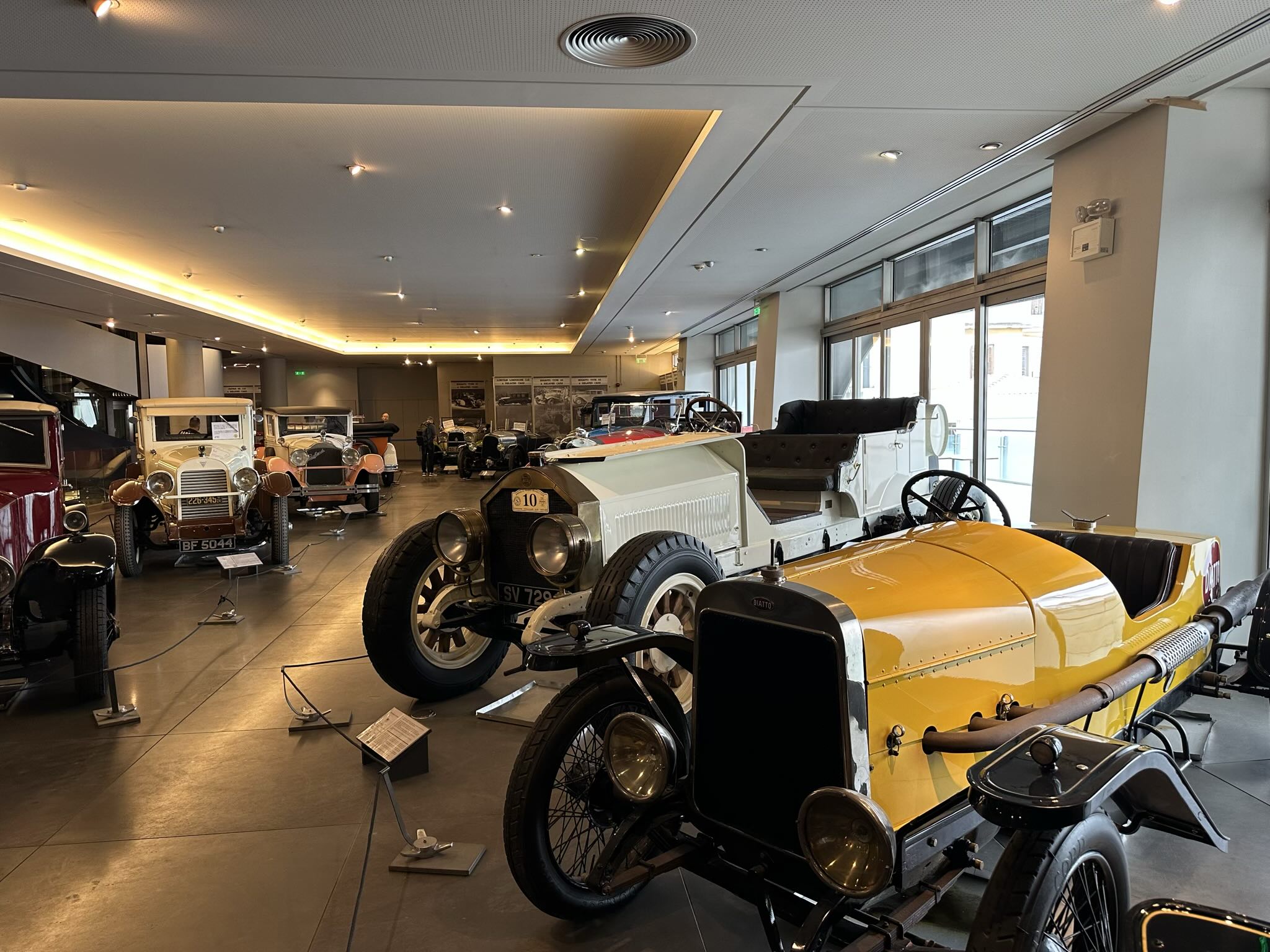
Welcome to the automotive universe where certain cars put the ‘meh’ in engineering excellence. We’re diving into a realm of vehicles that have made you pause and wonder, ‘Did the manufacturer really even try?’ These cars have etched their names in automotive history not for their stellar performance or groundbreaking designs, but for their spectacular missteps. Let’s take a closer look at some of the most notorious blunders that have left car enthusiasts scratching their heads in disbelief and automotive critics roaring with laughter. From baffling engineering fails to questionable marketing strategies, these are the cars that certainly raise eyebrows and provoke chuckles!

**1. Triumph Mayflower (1949–53)**: Triumph, a name often associated with sleek British motoring, decides to manufacture a luxury small car! The Triumph Mayflower was intended to charm the American market, but it ended up being more of a comical footnote in automotive history. With a body inspired by the likes of Rolls-Royce but with all the grace of a hippo in a tutu, this car was heavy, underpowered, and downright ugly. James May, an automotive guru, didn’t hold back, calling it the ugliest car ever built! It seems that the Mayflower was more like a may-not.

**2. Nash Metropolitan (1954–62)**: The Nash Metropolitan aimed to be a chic urban runabout, marketed as a ‘motorized shopping cart for affluent urban gals’. Yes, you heard that right! While it tried to flirt with the female demographic, it ended up as a commercial failure due to its poor performance and handling. Brian Sewell labeled it as one of the nastiest cars ever built. Despite this, a cult following emerged, demonstrating that even the most flawed designs can win hearts over time.

**3. Renault Dauphine (1956–67)**: Renowned for its sales success in Europe, the Renault Dauphine flopped spectacularly in the U.S. market. It took a staggering 32 seconds to reach 60 mph! Critics didn’t hold back, with Time magazine calling it one of the 50 worst cars of all time. Rust issues and a reputation for subpar performance left many wondering how it ever made it across the Atlantic.
**4. Trabant (1957–90)**: Meet the Trabant, the quintessential symbol of poor engineering in East Germany. With its notoriously smoky two-stroke engine, it became a representation of a struggling economy, earning the title of a ‘hollow lie of a car’. Despite its outdated aesthetics and lacklustre performance, the Trabant has secured a spot on numerous worst car lists, leaving a legacy that continues to baffle enthusiasts.

**5. Edsel (1958)**: The Edsel debuted amid a chaotic storm of marketing hype, only to deflate spectacularly like a punctured balloon. Despite a jaw-dropping investment of $400 million, it quickly morphed into a commercial catastrophe. As Dan Neil pointedly remarked, ‘It was the first victim of Madison Avenue hyper-hype.’ Its infamous grille has been humorously likened to everything from toilet seats to female anatomy, cementing its place in automotive infamy.

corvair rear-engine layout, Photo by wikimedia.org, is licensed under CC BY 2.
**6. Chevrolet Corvair (1960–64)**: The Corvair was initially praised but later scrutinized for its rear-engine layout, resulting in a series of accidents and lawsuits. Ralph Nader’s book, *Unsafe at Any Speed*, thrust the Corvair into the spotlight for all the wrong reasons. Dan Neil stated that GM knew the car was a handful but didn’t spend the extra dollars to make it safer.

**7. 1963 Hillman Imp**: With soaring expectations upon its launch, the Hillman Imp quickly spiraled into a commercial failure, plunging its parent company into financial distress. Although it received some praise for its modern design and handling capabilities, the poor build quality ultimately eclipsed its potential, creating a classic example of style triumphing over substance, much to the chagrin of critics.

**8. Subaru 360 (1968–70)**: Marketed as ‘Cheap and ugly does it!’, the Subaru 360 was indeed a commercial failure in North America. Consumer Reports labeled it unacceptably hazardous with its slow acceleration and flimsy structure. One review even described the experience of exiting the car as a pleasure. It’s astonishing how Subaru managed to rebound from such a dreadful debut!

Let’s shift our gears and explore the cultural impact and the lessons we can learn from these automotive train wrecks. It’s not all doom and gloom; sometimes failure can spark creativity, and even the worst cars can leave a lasting impression. So, buckle up as we dive into how these automotive disasters have influenced car culture and what we can learn from them.

**9. Triumph Mayflower’s Legacy**: The Triumph Mayflower may have been the clown of the automotive class, but it also contributed to discussions around automotive design and functionality. Its awkward styling and underwhelming performance became a cautionary tale for manufacturers about the importance of market research and understanding consumer needs. This car opened up conversations about what truly defines luxury in a vehicle. Was it about the lavishness of features, or was it about an experience that resonates with the driver? The Mayflower’s failure ultimately helped carmakers better appreciate the market they were targeting and the expectations they needed to meet.

**10. Nash Metropolitan and the Power of Branding**: Dubbed a ‘motorized shopping cart’, the Nash Metropolitan surprisingly evolved into a symbol of quirky charisma. Even though it failed to connect with its target market, it gradually garnered a cult following over the decades. This case teaches us about the monumental role of branding in the automotive sector. Sometimes, nostalgia and uniqueness can transform a car into an icon, showing that a vehicle’s essence can change over time, leading to unexpected appreciation.

**11. Trabant: The Symbol of a Generation**: The Trabant is often mocked, yet it embodies a unique cultural significance that transcends its mechanical failures. It was a symbol of life in East Germany, illustrating the struggles and resilience of its people. After the fall of the Berlin Wall, the Trabant became a nostalgic icon, showcasing how cultural significance can elevate even the most criticized models to cult status. It reminds us that sometimes, a car can mean more than just transportation; it can represent societal values and historical context.

**12. Edsel: Cautionary Tales in Marketing**: The Edsel’s grand failure was not just about the car itself, but rather the marketing blitz that surrounded it. It serves as a vivid reminder of how overhyping a product can backfire spectacularly. The Edsel teaches future manufacturers to temper expectations, ensuring that marketing is grounded in reality. This car also highlighted the importance of delivering on the promises made to consumers. It wasn’t just the design; it was the disillusionment that left a bitter taste in the mouths of consumers across America.

**13. Chevrolet Corvair and Safety Standards**: The controversies surrounding the Chevrolet Corvair shed light on critical safety reforms in the automotive industry. Thanks to Ralph Nader’s persistent scrutiny, vital discussions about vehicle safety standards emerged, which continue to influence car manufacturing practices today. The issues that plagued the Corvair catalyzed the formation of organizations dedicated to improving vehicle safety, ultimately benefiting everyone on the road. This story illustrates how scrutiny can drive progress and that failures can indeed inspire necessary changes.

**14. Hillman Imp: The Cost of Rushed Production**: The rise and fall of the Hillman Imp reveal the dangers of rushing a vehicle into production without adequate testing and quality control. It serves as a reminder to manufacturers that taking the time to ensure a well-built vehicle can save a brand’s reputation. The Imp’s failures emphasized the importance of thorough testing and quality assurance, ultimately encouraging manufacturers to prioritize craftsmanship over speed to market. Rushed productions can lead to significant financial repercussions, as demonstrated by the fate of the Imp.

**15. Subaru 360: Safety Matters**: The Subaru 360’s experience in the North American market highlights the importance of safety regulations in automotive design. Its structural deficiencies caused it to be labeled as dangerous, prompting discussions around regulatory standards that protect consumers. Even today, manufacturers must ensure that their vehicles meet the necessary safety standards to avoid similar pitfalls. The 360 serves as a stark reminder that a vehicle’s safety is paramount and should never be overlooked.

**16. VAZ-2101/Lada Riva: Resilience in Simplicity**: The Lada Riva, though often criticized for its simplicity and outdated design, still has a strong cult following. It teaches us that sometimes, simplicity and reliability can triumph over luxury and complexity. The Lada became a functional vehicle for many in Russia and remains a cultural icon. It shows how a vehicle can find success through resilience and reliability, even if it lacks the pizzazz of modern cars.

**17. AMC Gremlin: Embracing the Odd**: The AMC Gremlin is a true lesson in embracing uniqueness. Its unconventional design has made it memorable, teaching manufacturers that there is value in standing out from the crowd. The Gremlin’s oddity has led to a sense of nostalgia among collectors and enthusiasts alike, proving that sometimes, being different can be a vehicle’s greatest asset. It encourages us to appreciate diversity in automobile design and functionality.

The automotive world is a captivating mix of triumphs and pitfalls, filled with hits and misses. As we reflect on these automotive blunders and the valuable lessons they offer, it’s vital to recognize that every car misstep contributes to the industry’s evolution. The landscape of automotive design and engineering is shaped not only by successes but also by the failures that motivate manufacturers to reach new heights. So, the next time you spot a car that seems to have missed the mark, remember: it might just be a stepping stone toward the future of innovative automotive designs. With a blend of laughter and nostalgia, let’s continue to embrace the whimsical aspects of the automotive world and anticipate the exciting innovations that await us on the horizon.
Related posts:
List of automobiles known for negative reception
My Coworker’s Heart Exploded Because His Crappy Cars Are Too Stressful, So I Just Bought Him A Toyota (A $500 One With 240,000 Miles, But Still)
Does Your Car Have Soy Based Wiring? [UPDATED 2023] – How to Prevent Rats from Eating Your Car Wires





